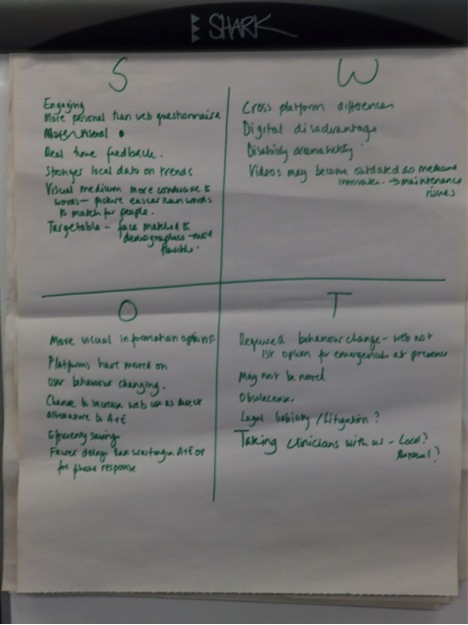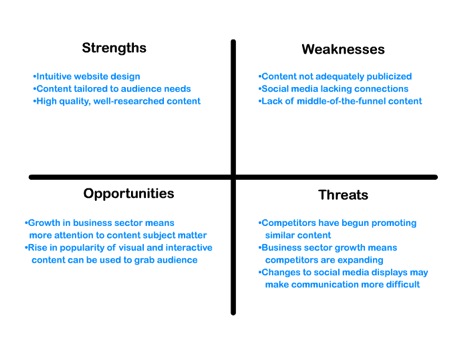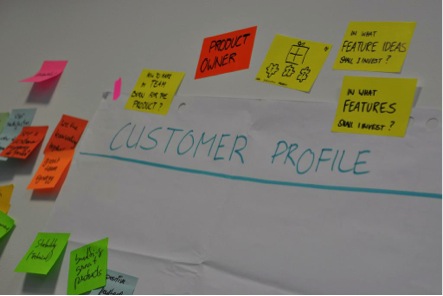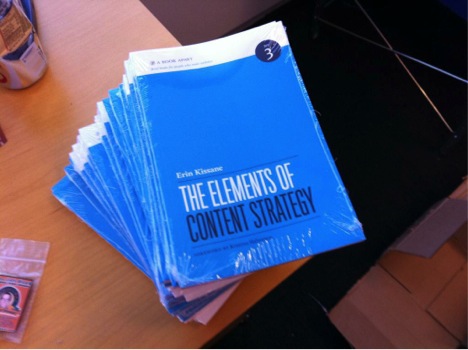History is littered with people who failed at their passion.
- Walt Disney
- Steve Jobs
- Abraham Lincoln
Each of these losers flopped, getting fired from their dream jobs, seeing their businesses collapse or losing out for the US presidency, respectively.
The thing that made these names famous, though, wasn’t their failures – it was the fact that they kept trying even after things went wrong.
So if you’re facing a content marketing campaign that isn’t going your way, don’t get discouraged – watching a campaign fail can often set you up with the knowledge and skill you need to make a successful campaign next time.
Here’s my top tips of advice for how to pick yourself up after a failed campaign and using your newfound understanding of content marketing mistakes to build an even better next attempt.
Don’t Give Up Too Soon
The first and most important piece of advice I can give you is: don’t throw in the towel until you’re sure your campaign isn’t working.
- In my experience, a lot of content marketing campaigns are scrapped before they really get the chance to develop.
It takes time to build a marketing success – and all too often in a world of success stories, amrekters expect to see instant results for their efforts, even though that’s not how things really happen.
- In reality, there’s no such thing as an overnight success – all campaigns started weak and grew from there.
- A lot of work has to be within what’s known as ‘The Dip’, where things don’t look like they’re working but are actually generating success under the surface.
To avoid cancelling your campaign too early, I recommend running every campaign for three times longer than you think you should.
- Throughout the first and second period, do everything you can to make the campaign a success.
- During the third and final period of time, watch to see which elements of your campaign are working even if on the whole it’s not lighting the fires you were hoping for.
If you’re absolutely certain that your campaign is a dud, then at least give it time so that you can figure out what’s not working.
Breathe – It’s Not the End of the World
It can sting a lot when a campaign goes sour.
- You’ll likely have poured a lot of time, energy and resources into making your content strategy, and to see it fall flat can really hurt.
Remember, though, that you’re not alone.
- Famous marketers since the beginning of marketing have insisted that failure helps you to do better next time – you know what doesn’t work and how to avoid it.
So when your campaign doesn’t work out, take a moment to breathe, refocus your efforts, and move on.
By Learning from your mistakes you’ll be in a better position to create an even more powerful new campaign.
Perform a Full Analysis
In having experienced the failure of a campaign, you’ll no doubt have learned the importance of getting things right.
- This is a good thing: you’ll know not to rush into your second attempt all guns blazing, and will be prepared to perform the research and analysis you need to do to get things right the second time.
Before beginning with a new, revitalized campaign, it’s time to take what you can from what came before – including things that worked well, and lessons on what to avoid repeating.
You might find it helpful to complete a SWOT analysis for your previous marketing campaign.
- This involves listing the Strengths, Weaknesses Opportunities and Threats which your campaign encountered.
- By breaking down the things your campaign did well, the things that went wrong, and the way you handled opportunities and pitfalls throughout the campaign, you’ll have a better idea of how to structure your next campaign.
Here’s a sample SWOT analysis I’ve put together for a fictional content marketing campaign:
- As you can see, this campaign has focused on creating smart, well-researched and well laid out content – so what could have gone wrong?
- Unfortunately for the campaign, it failed to draw attention to its content by neglecting distribution and publication streams, and was unable to connect with audiences on social media.
- This led to the failure of the campaign.
Alongside this, the analysis looks at what opportunities and threats are on the horizon, which should be taken into account when planning a renewed campaign:
- The industry is going through a period of growth, with a lot more people being drawn to the subject.
- This is good for the next campaign as there’s an opportunity to connect with a growing new audience, but it also makes things difficult because other companies are expanding to fill the gap.
- The new campaign needs to focus on producing something new and original, and, learning from the mistakes of the past, have social interactions at its core.
In this example, let’s assume that Twitter have recently changed their algorithms for displaying content, and the SWOT analysis has taken into account what these new changes might mean for social interactions.
- If you can identify a particular weakness your campaign might have, it’s worth doing your research on what opportunities and threats might be coming for that area of focus in the near future.
- This will help you to make progress and avoid pitfalls when it comes to launch a new campaign.
In creating your analysis of your marketing plan, it’s important not just to focus on the content you produced and the marketing efforts you made – you should also look at external factors which influenced your campaign’s reception.
- Include market segmentation, growth, market needs & trends – the forces which played a part in your successes and failures during the campaign.
- Consider how, presented with the same situation again, you might try an alternative approach when unexpected things occurred during your campaign.
Through understanding how outside influences affected your campaign, you’ll be better prepared to deal with future problems and opportunities during your next campaign.
Fully Research Competitor Campaigns
It’s not enough to identify what went wrong with your own campaign.
If you’re going to make a comeback with a bigger, better campaign, you’ll need to put some time into researching other, more successful attempts to promote content similar to yours, and to sell products to your target audience.
In doing this, the best place to start is looking at the campaigns that your competitors are running, and the way they’re reaching audiences.
- Just as with your own content, it’s worth trying out a SWOT analysis of competitor plans, making a list of what they’re doing well and what they’re struggling with.
- You can also look at how they dealt with the obstacles and opportunities that appeared during your campaign, comparing the way they dealt with these events versus the way your campaign handled them.
To get a good idea of what your competitors are doing well, look at them from a customer’s point of view.
- What are they doing that’s turning heads from your target market?
- What’s not grabbing hold of audiences in the way it should?
It’s useful to examine the strategy, content types and content schedule that your competitors are making use of, to get a good idea of how their campaign stacks up against your own.
- You can use tools like BuzzSumo to get accurate figures and statistics for your competitors, which can be used to see the numbers behind their campaign.
- This can give you an idea of how your own content stacks up against theirs.
It’s important to note that with your analysis of competitors, you’re not looking to find ways to directly copy their successes.
- Taking this approach would be a surefire way to doom another content campaign as you’ll be constantly seen as the poor-man’s alternative to your competitor.
Instead, you’re looking to see to what extent the tone, style and content types your competitors are using appeal to your own intended audience, so that you can create something special for your own revitalized campaign.
Rebuild Customer Profiles
There are a lot of reasons why a content marketing campaign might fall flat. Chief among them is a failure in meeting the needs of your intended audience.
- It’s relatively easy to create content that draws in a large crowd of visitors to your website.
- Without focusing on the right visitors, though, you can end up with a seemingly successful campaign that isn’t actually engaging with your customers, and isn’t creating any profits.
Because this issue is so widespread in marketing, I strongly recommend that before you begin planning a new campaign, you look as closely as you can at your target customers and identify the things they need from your content.
- Focus on your existing customers and the information you have on them – what content do they respond well to, and what in hindsight wasn’t as successful as you’d expected it to be.
- This analysis will help you identify what content types you should be focusing on, and what you can do to appeal directly to your potential customers without wasting time on disinterested website visitors.
In doing so, it’s important not to go too narrow with your target audience – there are likely a variety of different customers who will be interested in your products, all of whom will have different needs.
- Focus on multiple demographics within your customer base to ensure that you’re providing content for everyone who’s interested.
- That said, be specific – what is it about your content that draws in customers, and what few types of people are going to be most interested in your services.
You may find that by trying to appeal to a new demographic your campaign will find greater success – for this reason, it’s important to consider all people who might be interested in your products before you whittle your list down to a few key customer demographics to focus the bulk of your attention on.
Create A New Content Strategy
A content strategy should be central to all you do in your campaign.
- A documented strategy points you in the right direction with all of your content, making sure that your marketing efforts have a clear focus and are working to achieve solid goals.
- If you didn’t have a written strategy with your previous campaign, it might have played some part in the lack of success you experienced.
For your new campaign, it’s important to start with some solid targets to achieve, and to create a consistent editorial calendar that can motivate you to produce the best possible content regularly.
You can use the data you’ve gained from your previous campaign to inform your new plan. This can include:
- Setting goals to overcome the shortcomings of your previous campaign
- Focusing on building up and taking advantage of areas that you feel your previous campaign shone.
Throughout all of this, you should focus on ways to increase your content quality, to make sure that with your new campaign you’re producing the most effective, carefully targeted content possible.
Areas To Focus On
There are a few key elements that can make or break a marketing campaign.
If your previous campaign didn’t light the world on fire in the way you’d hoped, it’s important to focus on making sure these tent poles of your campaign are in the right place this time around:
- Identify a better tone and style – you want to be sure that the way you’re speaking to your audience fits in line with what they’re after, and differentiates you from your competition.
- Pick the right content types – based on the demographics you’re aiming at, you want your content to fit the way they consume media. You’ll also want to focus on making content that will grab attention without feeling out-of-place for your brand.
- Customize, personalize – if you haven’t been providing a personalized experience, you should be: your content should directly reflect what your customers specifically need.
- Focus on Calls to Action – an otherwise successful content marketing campaign can easily be derailed if your content isn’t pushing people to do something. Build your content around a specific call to action to ensure that, after taking in your message, your customers do what you want them to.
These are just a few of the important points that will help your campaign to reach further than its predecessor. Get these ideas right, and everything else will fall into place.
Perform Small Tests
Don’t take anything for granted – before beginning your new campaign proper, test out a few different directions for your content.
- These tests could involve small focus groups to see which kinds of content will grab people the most.
- You could reach out to existing customers and ask their opinion on a new direction for your campaign.
Whatever you do, you should ensure that you A/B test everything in your campaign to make sure that your content is as on-point as it possibly can be in every aspect.
Even small changes found through split testing can make a huge difference to the success of a campaign and can help you provide the right kind of content to make your new campaign take off.
Finally: Make Killer Content
The final step is also the most involved, most time consuming, and most difficult.
Having learned from your previous failures, it’s time to get back on the horse and begin making solid, enjoyable, authoritative content that will wow audiences.
While this step can seem daunting, especially in the wake of a less than successful campaign, making sure that you’ve got a solid, informed plan in place which takes into account past failures will ensure that your next attempt will reach far greater heights.
Have you ever seen a campaign fail? What advice would you give to those who are struggling or starting all over again with a campaign? Leave a comment below!
Images:
Pixabay, Pixabay, Wikipedia, Flickr, Flickr, Pexels, BuzzSumo, Flickr, Flickr, Flickr, Flickr, Pixabay.
















